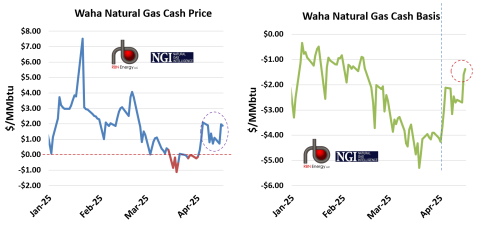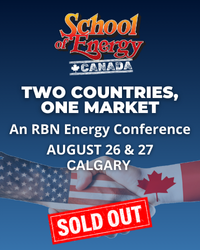What happens when almost everybody is on the same side of a trade and the fundamentals flip? Yup, max pain. Everyone races for the exits at the same time, sending the market into speculative liquidation mode and causing cascading losses. It can get frantic and ugly — tens or even hundreds of millions of dollars are at stake, and no one’s sure how bad things might get. As we discuss in today’s RBN blog, frantic and ugly is precisely what happened over the last few days at the Waha natural gas trading hub in West Texas.
Just two weeks ago, we posted Already Gone, where we discussed the implications of Waha prices going negative again, months before the market expected that to happen. Many factors were to blame, including faster-than-expected growth in Permian crude oil and associated gas production, pipeline maintenance, and constrained flows on the new Matterhorn Express pipeline, each putting downward pressure on Waha prices.
But no sooner than the pixels had dried on that blog, gas prices made a U-turn, went positive and ramped higher during the first half of April. And it wasn’t just spot (aka cash) prices (left graph in Figure 1 below) and cash basis (right graph) that increased — the forward curve for all of 2025 shifted markedly higher too, as did the curve for 2026. (More on that in a moment.) The move has turned into what some have described as a market rout in financial basis futures, severely punishing hedgers and traders caught on the wrong side of the market.
Figure 1. Waha Natural Gas Cash Price and Cash Basis. Sources: RBN, NGI
Note: Vertical dashed line in right graph indicates April 1.
Before talking about why it happened, let’s consider what happened. Permian producers use Waha basis futures to hedge their production — the basis being simply the difference between the price at Waha and the price at Henry Hub. They sell basis futures on the forward curve to protect their bottom line against adverse price moves, which, as we know, are common at Waha. Traders, in turn, speculate on Waha futures to bet on how prices will move. Put simply, they buy (go long) when they think the price is going up, and sell (go short) when they think the price is going down. Trader strategies are usually much more sophisticated than that, with deals more common across the calendar and against other hub prices. But the main point is that traders’ futures trades are bets on price direction.
Join Backstage Pass to Read Full Article











